Уютные каюты для экономных путешественников, расположенные вблизи мест активных развлечений. В номере оборудована удобная система хранения одежды, душевая комната и кондиционер. Для ребенка в возрасте от 7 лет требуется отдельное место в каюте, как для взрослого.
Уютные каюты для экономных путешественников, расположенные вблизи мест активных развлечений. В номере оборудована удобная система хранения одежды, душевая комната и кондиционер. Для ребенка в возрасте от 7 лет требуется отдельное место в каюте, как для взрослого.




Every diver would agree: the vital importance of healthy coral reefs goes way beyond the aesthetic pleasure of observing their beauty while scuba diving. Coral reefs, being the most diverse and fragile ecosystem on the planet, protect coastlines from storms and high waves, filter the water and secure habitat for innumerable marine creatures, serve the source of nitrogen for marine food chain, assist in carbon fixing; not even mentioning its importance for local economies — so, to sum it up with no exaggeration, help the planet survive. Many factors affect the quality of reefs in a region, among which — currents and water temperatures, climate and its changes, human activities resulting in water pollution, destructive fishing methods (dynamite, cyanide) and trawling, etc. Due to that, if the region in general is untouched and conservation efforts are in place, then there are high chances that many of the coral reefs represent the abundance of marine life and offer spectacular diving/snorkeling experience, so selecting just one “best” reef can be challenging.
The Coral Triangle, a wonderland for divers, encompasses the oceanic territory between the Philippines, Bali, Indonesia, Timor Leste and Solomon Islands. However, covering only 1.6% of the total oceanic area, this global center of marine biodiversity and one of the world’s top priorities for marine conservation is home to 76% (605) of all known coral species on a planet, more than 3000 species of fish, including the whale shark. It’s also a habitat to 6 out of 7 marine turtle species and has the largest mangrove forests coverage in the world. There are 15 endemic coral species and 41 regional endemics shared with Asia. Simply put, no other area will astonish you more with its colors, abundance and diversity of marine life. The epicenter of the Coral Triangle is located in the Bird’s Head Peninsula of Indonesian Papua, which hosts 574 species (95% of the Coral Triangle, and 72% of the world’s total). Within the Bird’s Head Peninsula, the Raja Ampat archipelago has 553 marine species. And what’s even more fantastic is that around 20 new species are discovered yearly. What else can a diver dream of?
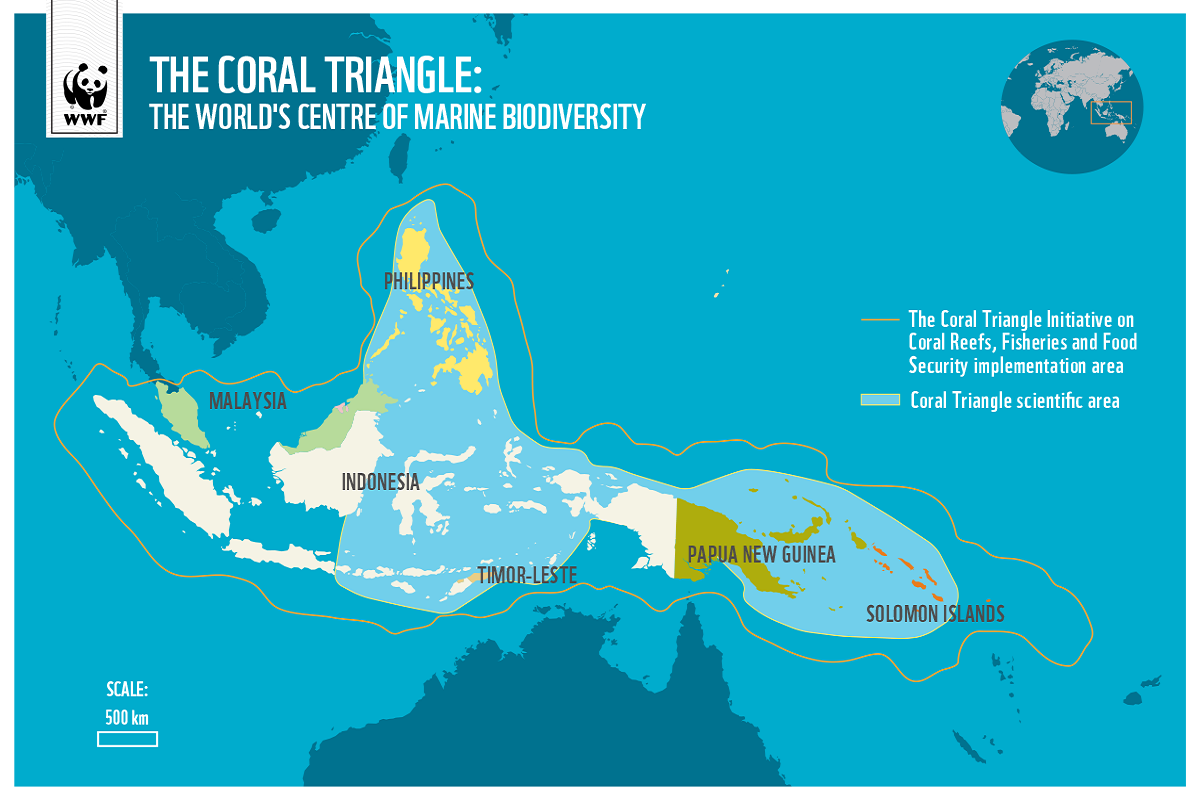
Caribbean region (Florida, The Bahamas, Bermuda, the northeastern coast of South America and Caribbean sea itself) comprises only about 8% (by surface area) of the world’s coral reefs. It has two barrier reefs, Belize Barrier Reef of 220 km in length and a smaller one which lies north of Providencia Island (Colombia). Here only 65 species of corals and around 700 species of fish are recognized. The coral diversity (but not its quality) is considered to be poorer than in the Western Indian Ocean, which contains 16% of the world’s coral reefs. However, the reefs of Western Indian Ocean were hugely affected by 1998 and 2016 global bleaching events, which resulted in roughly 30% of severe corals bleaching.
However, beautiful and thriving coral reefs can be found in many oceans and seas covering our planet. And isn’t it just the right time to review your bucket list of the world’s top diving sites and visit all of the most colorful reefs of the planet?
1. Fiji: Grand Central Station and Chimney, Rainbow reef
Welcome to the “Soft Coral Capital of the World”! Just upon entering the turquoise blue water and making your first breaths, beware of losing your regulator out of awe. The colorful splendor of 10,020 km² of coral reefs is incomparable with anything you’ve ever seen before. Any dive in Fiji will be amazing from the first till the last minute, but there are a couple of dive sites winning over the others (if that’s possible at all). Grand Central Station (the wall) and Chimneys (pinnacles) within Namena Marine Protected Reserve boast over 400 species of corals, sea fans, exotic sea grass and sponges, not even mentioning the abundance of marine animals, including dolphins, sea turtles and whales. Along with their coral towers and colorful fish life, from May to August you’ll find up to 30m visibility here! Grand Central Station is famed for pelagic fish encounters like tunas, barracudas, sharks (including even hammerheads), jacks, snappers, manta rays, marble rays, ribbon eels, leaf scorpion fish, etc. Chimneys are rather a coral, macro- and invertebrate site, a really fantastic place, so full of life that you can spend all your dive time staying at the same spot! The best part of the Chimneys is on the top of the pinnacles where you will see a huge variety of colorful anthias and the garden of anemonfish.
Rainbow Reef is actually a vast area in Taveniu, with the best dive spots named Rainbow’s End and Rainbow Passage. The reef’s name fully corresponds to what you see underwater: kaleidoscopic whirl of colors offered by hard and soft corals (230 species), brightened by currents and various marine life (1200 species). The site has several bommies with a great number of soft corals, and their colors indeed resemble a rainbow! Add here some beautiful nudibranches, Christmas worm trees, clown triggerfish and anemonefish, but then turn around — there might be a white tip reef or leopard shark or a school of barracudas behind your back. A feast for a diver’s eyes and one of the top dive spots in the world!
The warmest period to dive at Fiji is from April to October, but you might find up to 50m visibility between July and December.
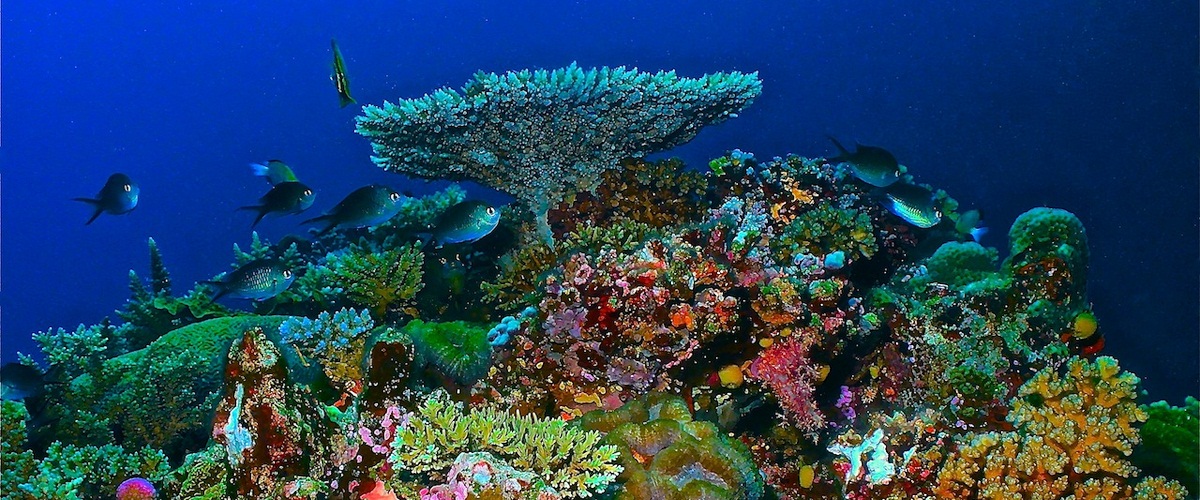
2. Indonesia: Raja Ampat (Cape Kri), Komodo (Wakatobi)
Being the epicenter of the Coral Triangle, Raja Ampat has the highest density and diversity of corals (537 species, 75% of all known ones) and fish (1074 species) on the planet. Just believe it: nowhere else on earth you’ll see so many different creatures and corals underwater. Due to persistent conservation efforts and, of course, initial lucky location, the reefs of Raja Ampat are in a perfect health with lots of giant purple corals, hard coral tables, deer antler corals, green and brown moose antler corals.
Holding the world record for the dive spot with the largest number of recognized species (374!) in one single dive, Cape Kri is home to more than 540 types of corals and over 1000 species of coral fish. The largest “underwater library” in the world is actually an extensive wall, covered with hard and soft coral varieties, reaching 40m where pretty strong currents are a regular thing. Just upon approaching the slope, you’ll see the fantastic variety of fish, including dogtooth tuna, giant trevallies, napoleon wrasse, giant groupers, whitetip sharks and chevron barracuda. Pay attention to smaller creatures as nudibraches and scorpionfish as well and enjoy the incredible coral colors as well. The biodiversity here is simple amazing, and new species are still being discovered.
The Wakatobi Marine National Park (known as Tukang Besi Archipelago) is the second largest Marine Park in Indonesia. It offers excellent diving on some of the most beautiful reefs on the planet and boasts 25 groups of coral reefs, including barrier reefs, atolls (including the largest world atoll Kaledupa) and fringing reefs. Over 950 species of underwater creatures live here, among which there are pygmy seahorses, nudibranches, ghost piperfish, manta rays, dolphins, whale sharks, hammerheads, dugongs and whales and many more. Be prepared to the fact that Wakatobi is an exclusive and luxury destination with only one resort specialized on scuba diving (if you prefer resorts to liveaboard experience). However, the underwater miracles of Wakatobi are worth all the costs!
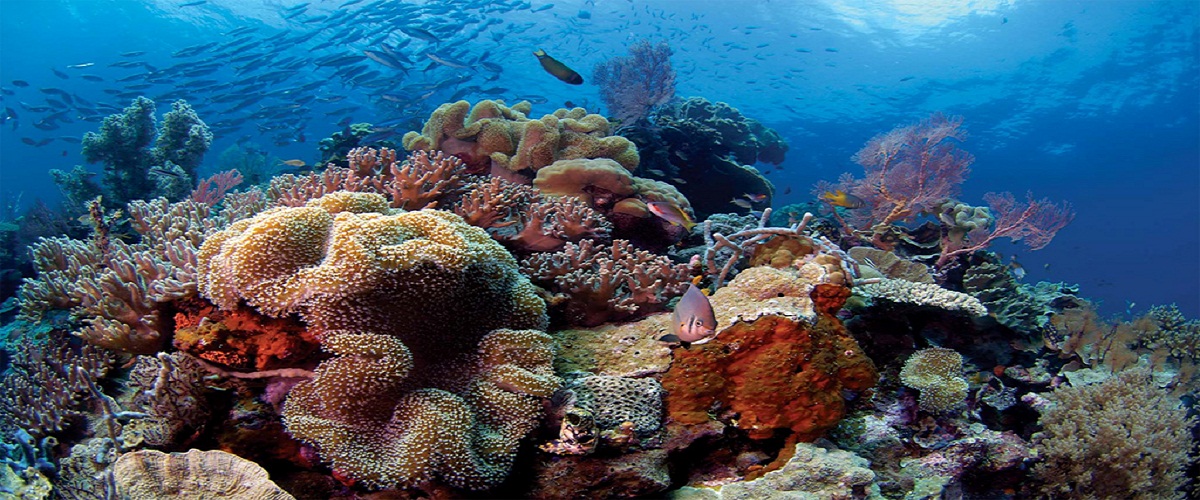
3. Egypt: Zabargad, St. Jones
The Red Sea should have been called the Colorful Sea, don’t you think? Diving the Red Sea’s Deep South is all about unbelievable walls and drop-offs covered with innumerable soft and hard corals and coral gardens, tunnels and overhangs, abundant reef life and great visibility. There are enough exciting opportunities for both macro underwater photographers, fans of octopus, cuttlefish, scorpionfish and crocodilefish, and for those preferring bigger animals: currents attract grey reef and hammerhead sharks, schools of jacks, barracuda, macrel and even manta rays.
The underwater slopes of Zabargad Island (“Topaz” in Arabic) are covered by stunning soft and fan corals, swaying in the currents. The slope reaches 30m and then drops down into the blue. The coral formations are the home to pupperfish, sweetlips and octopuses, and the bluespotted stingrays, turtles and crocodilefish live at the sandy floor. The Khanka, the USSR transport wreck, lies here at the depth of 24m, and Neptuna, the German safari boat which sank in 1981, lies at 15m depth. And if you check out the island’s beach, you’ll be fascinated by green and hawksbill turtles hatching there in August.
St. John’s is an extensive reef system, located close to the Sudanese border and known for its abundance of soft corals and black corals along with schools of pelagics and absolutely spectacular caves. The diversity of sights is amazing here, and St. John’s is a great option for those divers who go off the beaten track in search for healthy reefs and marine life.
Diving season is all year round, also due to the slightly warmer sea temperatures in this region, but May to September is less windy and more comfortable.
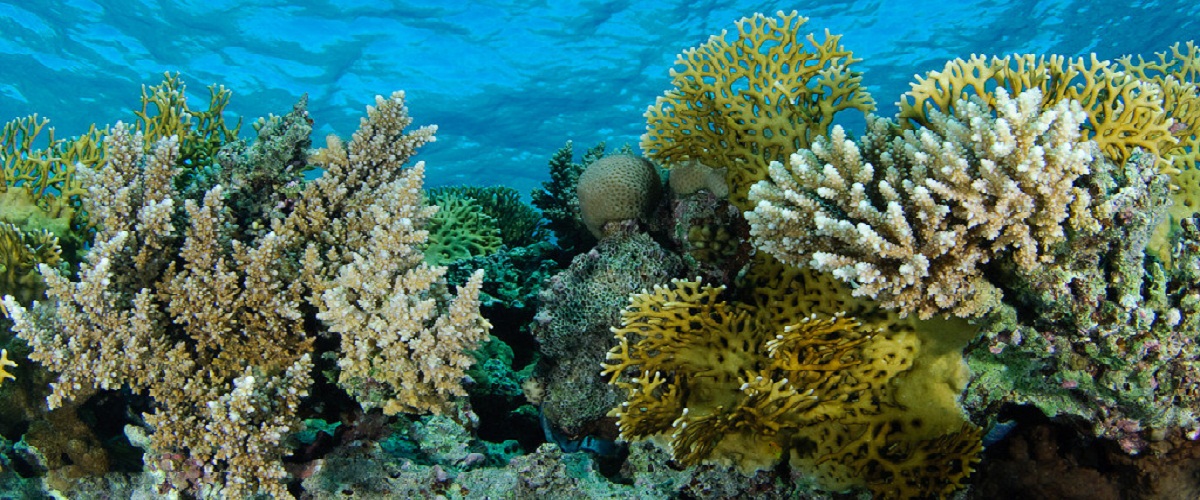
4. Philippines: Tubbataha, Apo Reef
The Tubbataha Reefs Natural Park, which covers almost 100,000 hectares of Marine Protected Area, is the very best of the Philippines and one of the top world diving spots. As a part of the Coral Triangle, Tubbataha offers simply astonishing marine life. It’s a kind of exclusive spot, as it can be reached only by a liveaboard, and only during the short period from March to early June when the sea conditions are calm enough. But if you make it — that’s going to be one of the best dive experiences in your life.
The park itself consists of two coral atolls, the North Atoll and South Atoll, and the Jessie Beazley reefs located a bit further north. This diver’s paradise is home to incredible marine life biodiversity having over 300 coral species and 600 species of fish. The reefs represent combinations of flat areas and walls reaching depths of over 100m. Here you will be amazed by the number of reef fish, thresher, hammerhead and whale sharks, turtles, manta rays, barracudas and huge schools of jacks.
34-kilometer Apo Reef is a marine sanctuary, a world famous marine park, frequently recognized by scuba diving magazines as a place where an extensive wealth of marine life can be found. There, two coral reefs separated by a 30 meter-deep channel make up the reef system where you will get great macro photography opportunities along with chances to spot reef sharks, manta rays and barracudas. Gorgonian fans, sponges, colorful soft corals cover the reef walls and form the habitat for lots of tiny creatures. Incredible place, where just in one square meter there’s so much going on! You can catch the best sea conditions and visibility between March and May.
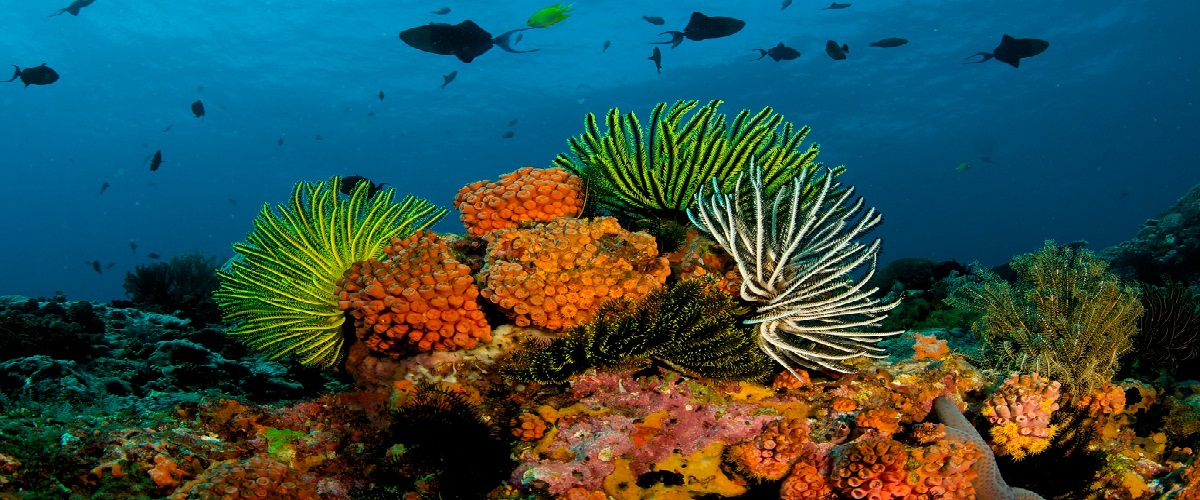
5. Australia: the Great Barrier Reef
It’s impossible to talk about the best reefs in the world without mentioning the Great Barrier Reef, the one and only of its kind. The world’s largest coral system, extensive enough to be seen from space (2300 km in length), the GBR is at the top of dive enthusiasts’ bucket lists. Some of its areas have suffered from bleaching and damage during the recent years, but the GBR with its main attractions as Cod Hole, Ribbon Reefs and Osprey Reef remains the truly remarkable place on the planet.
Each section of the reef will surprise you with something different. The GBR has more than 400 species of soft and hard corals, which provide home for over 1500 species of fish, including red bass, emperor fish, snappers, clownfish, coral trout, stonefish and many more. Among the smaller local creatures, there are pipefish, tiny seahorses, nudibranches, cone snails and lots of mollusks hiding among coral reefs. Dugongs are frequently spotted around, there is no shortage of sharks as well (125 species), and approximately 30 species of whales and dolphins live here — it makes up around 35% of the world’s total living cetacean species. Have we mentioned saltwater crocodiles as an example of marine diversity? Well, technically they live in mangroves on the coast near the riff, but still…
You can dive at the GBR the whole year round, but the period from late August to early December offers the best diving conditions, including minke and humpback whale spotting from June to November. And don’t miss the fantastic annual mass coral spawning of the inner reefs in the week after the October full moon, and the outer reefs do the same in November and December. But the thing is that even the whole year is not enough to explore the incredible Great Barrier Reef.
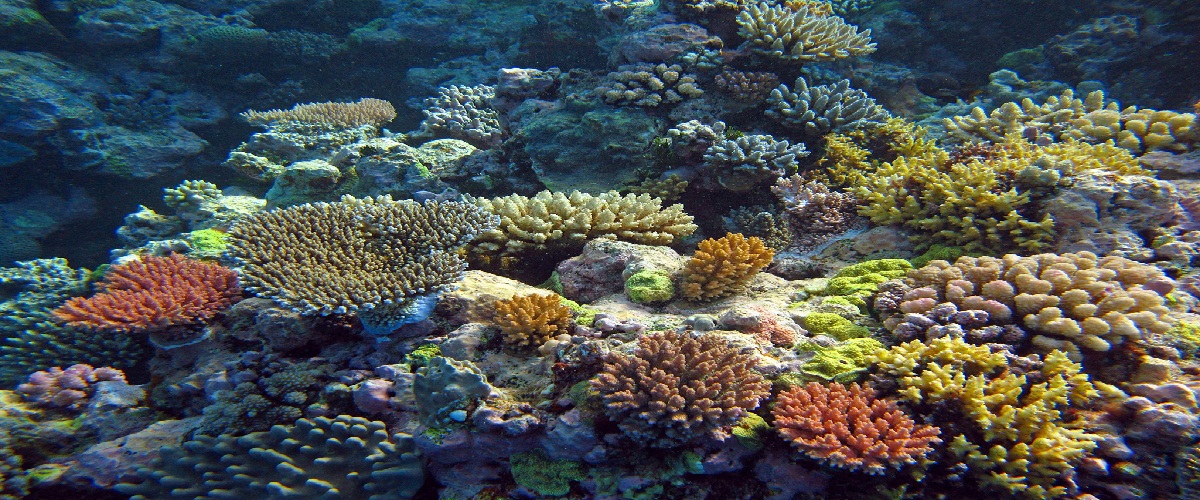
6. Belize: the Barrier Reef; Bonaire
The second largest coral system in the World, the largest reef system in the Caribbean and the world’s largest double barrier reef, the Belize Barrier Reef comprises almost 300 square kilometers of seven marine reserves, 450 cayes (small sandy islands on the top of coral reefs) and 3 atolls (Turneffe Reef, Lighthouse Reef and Glovers Reef). For now, scientists have recognized around 100 species of corals and 500 kinds of fish, but the amazing thing is that, due to the fact that 90% of the Reef still being unexplored, there are thousands of species yet to be discovered. Sounds like a plan, doesn’t it?
The abundance of marine life makes Belize Barrier Reef an exceptional place for diving. Hard and soft corals, gorgonian fans, shellfish of amazing variety and colors attract Caribbean reef and hammerhead sharks, spotted eagle rays, eels, parrot fish, amber jacks, trigger fish, groupers, sea horses, turtles, shrimps, manta rays and others. If you hear about diving in Belize, the first site which comes to mind is the Blue Hole with 300m in diameter and 124m in depth, claimed by Charles Darwin to be “…the richest and most remarkable coral reefs in the western Caribbean”. One of the most incredible places on earth, a must-do in Belize! But apart from that don’t miss Turneffe Atoll with its mangroves and thousands of small creatures, and shallow reef dives at Ambergris Caye with reef sharks, groupers, barracudas and eagle rays.
With its superb diving and snorkeling conditions, Belize is a place which will suit any diver. The dry season and the best time to dive here is from November to April, but generally the diving season here lasts throughout the year.
At the other side of the Caribbean sea Bonaire National Marine Park hosts amazing coral reefs protected from currents. It is recognized as one of the best Caribbean dive destinations, constantly winning first places in such nominations as “Shore Diving Destination in the Caribbean/Atlantic region”, “Best Underwater Photography” (due to its incredibly clean waters and unspoiled marine ecosystem) and “Best Macro Life Diving” by Scuba Diving Magazine. The island of Bonaire boasts over 60 shore dive spots where you can meet colorful parrot fish, angel fish, butterfly fish, groupers, sea turtles, eagle rays, dolphins and so many more underwater creatures. The fringing reef which starts almost at the shoreline, will impress you with elkhorn, boulder star, staghorn corals as well as variety of gorgonia. The deeper you go, the more of blushing star corals you will see. In total there are about 55 other species of corals (including black ones), varying by habitat, and numerous sponges.
Any time is the best time to dive at Bonaire, they say. However, the dry season lasts here from April to November.
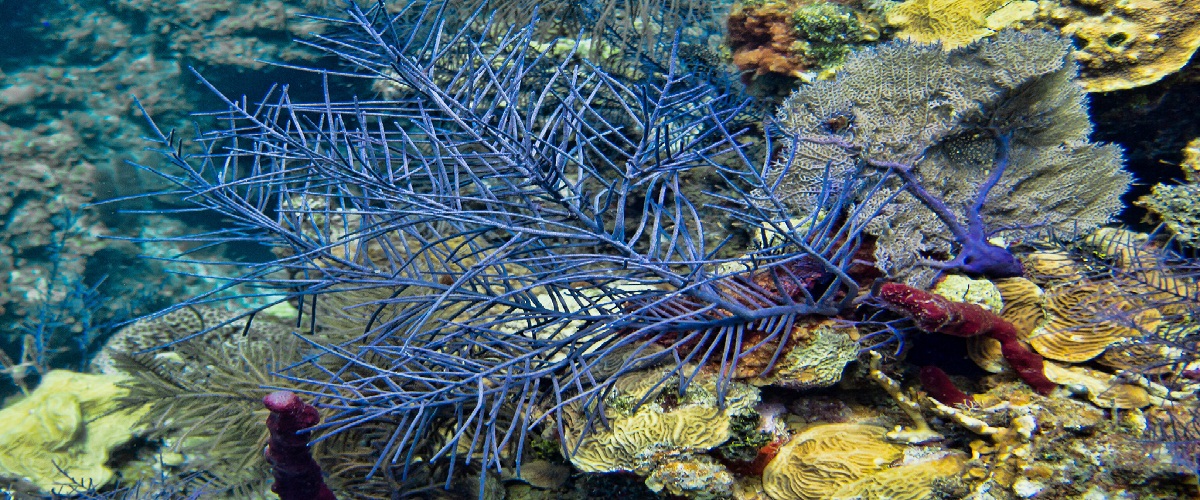
7. Mexico: Cozumel, Palancar Reef
The crown jewel of Mesoamerican Barrier Reef System and the main attraction of Cozumel Reefs National Park, Palancar Reef is an ideal place for both scuba divers and snorklers. The place was made famous by Jacques-Yves Cousteau, and now this incredible underwater ecosystem has become one of the world’s most popular scuba hot spots. The 5,6-km reef is actually a combination of several coral formations, where sea turtles, eagle rays, nurse sharks, barracudas, moray eels, and a kaleidoscope of colorful fish can be found all year round.
The most popular dive sites include Santa Rosa Reef with stunning overhangs of coral, huge sponges and lots of groupers; shallow Palancar Gardens with gorgeous caverns; Columbia Reef drop off with gigantic coral pinnacles. You will see lots of hawksbill turtles, feeding mainly on sponges that grow from crevices in the reef, endemic splendid toadfish with its luminous colors and dazzling zebra stripes, Goliath groupers (indeed huge!) and beautiful moray eels.
You can dive here all year round, with average water temperature of 24ºC in December and 30ºC in August. Some divers say that Palankar diving resembles flying, as visibility here is astonishing. Through the crystal clear water, you’ll be able to see over 40 meters!
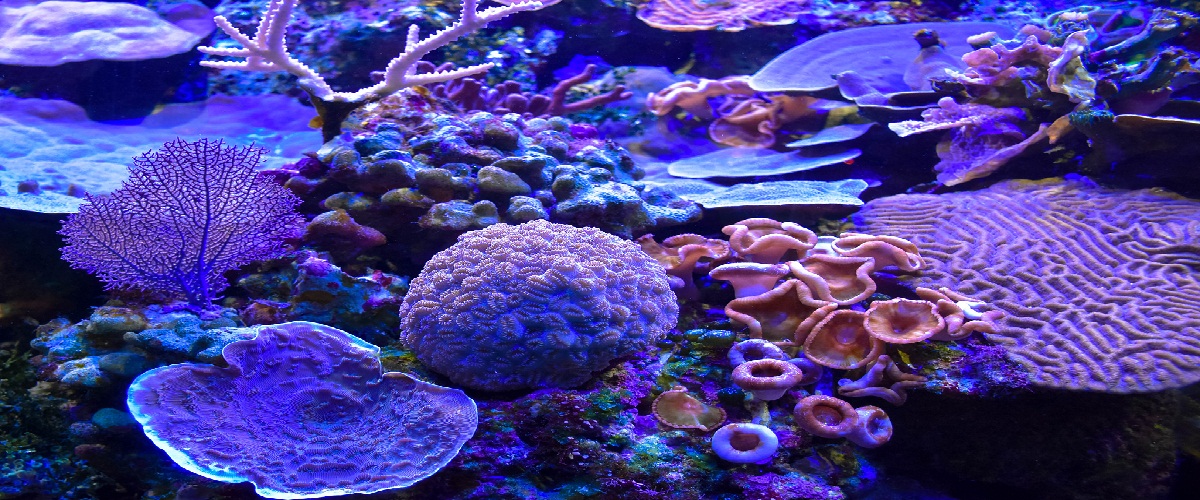
You already know: the Coral Triangle means awesome diving. This is just the case for Papua New Guinea, the world-class dive destination with untouched coral reefs, pristine waters, extremely rich marine life and exotic culture. Scientists have recognized over 350 species of corals and 860 species of reef fish here — isn’t that impressive? There are more than 45,000kms of reef systems with 350 species of corals and 860 species of reef fish in Papua New Guinea, so be sure that while diving here, you rarely come across other groups. Spectacular diving awaits you, whether you prefer shore dives or liveaboards.
The main diving spots in PNG are located at the islands of Bismark Sea and Milne Bay and at the coral reefs of the mainland. Numerous coral atolls and walls, barrier reefs and WWII wrecks along with wide-angle and macro subjects attract many underwater photographers. We bet you’ve never seen so many cute frogfish, pipefish, seahorses, exotic nudibranchs, crabs, shrimp and a plethora of other critters. For those who prefer large animals, PNG will offer reef sharks, turtles, sea snakes, barracudas, dolphins and even pilot whales. Exceptionally healthy reefs are ranked among the world’s more beautiful ones, due to colorful soft corals, fans and sponges. The most known dive sites include Kimbe Bay (pelagics, pilot and sperm whales, orcas and Japanese Zero fighter plane), Kavieng (excellent corals and fans, reef sharks, tuna, barracuda, WWII wrecks), and Milne Bay. It is the best of the best in PNG. In fact, Milne Bay is the birthplace of “muck diving”, and it helped put the country on the diving map.
Diving is awesome here all year round, with the best periods from mid-April to mid-June and mid-September to mid-December.
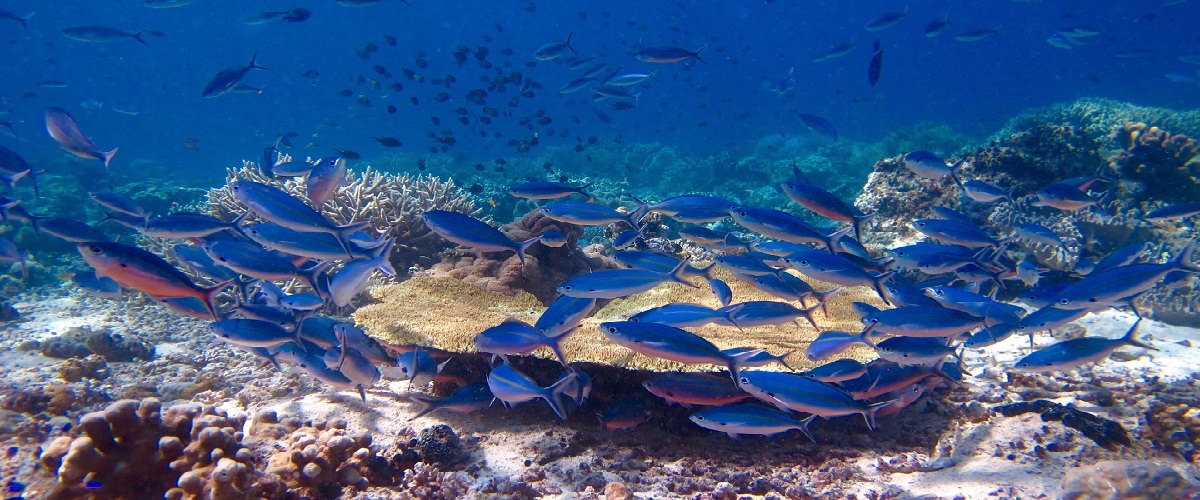
Due to their remote location (1667km south-east from Papua New Guinea), the influences of the modern world haven’t spoiled the Solomon Islands yet. Ranked among the top 10 most biologically diverse nations in the world, these 992 islands are considered the eco-tourism destination of the South Pacific. It seems that this pristine paradise remains one of the few Pacific’s best kept secrets.
Solomon Islands represent some incredible reefs with 494 coral species and several species that may be new to science. You find possibilities for muck diving, lots of wrecks, caverns, large sea fans, fantastic diversity of hard and soft corals, and lots of macro. The country is located at the eastern edge of the Coral Triangle, which is a promise of impressive marine life, ranging from endemic nudibranches to cute cuttlefish and lots of other critters. Schools of trevally and barracuda will surround you during the dive along with numerous colorful reef fish. Underwater landscapes are also varied with coral gardens, walls, slopes, pinnacles and caverns. Diving here is a great opportunity for the true explorers, as there are yet so much of unknown.
Divers are welcomed all year round here, with the dry period from June to August. But another half of the year, the rainy period, is still rather comfortable, because it’s not only about diving here, it’s also about getting to know the unique and well-preserved culture of local people. This is truly priceless experience!
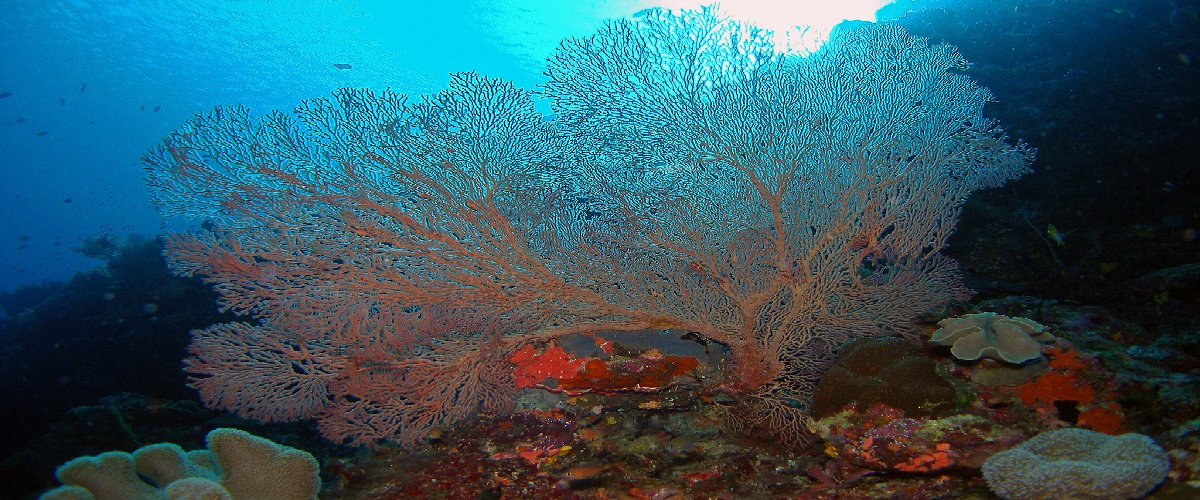
10. Thailand: Richelieu Rock
Discovered by Jacques Cousteau with the help of local fishermen, Richelieu Rock rises from a depth of 50m to the surface. One of the top Thailand’s dive site boasts superb biodiversity and is worth several dives.
Richelieu Rock is actually a large horseshoe-shaped area, where the large central pinnacle is surrounded by smaller rocks. They are covered with sea fans, anemones, barrel sponges and purple soft corals — so maybe that’s why Cousteau named this place after the red color of cardinal Richelieu’s robe?
The main problem here is that if you are an underwater photographer, you never know which lens to dive with. The abundant marine life is represented by chevron barracudas, manta rays and large groupers, giant trevally, pipefish, boxfish, whitetip and leopard sharks. Attentive divers will notice lots of nudibranches, frogfish, seahorses, tiger tail sea horses and porcelain crabs as well, but the main local stars are, of course, whale sharks attracted by plankton. You’ve got to have a bit of luck to meet this stunning animal, reaching 14 meters in length, as according to statistics, encounters take place in 10% of the time. But generally February to April is the best season to meet a whale shark at Richelieu Rock.
Because of the rough sea conditions, diving here is possible from late October to late May, with the best months of February and May.
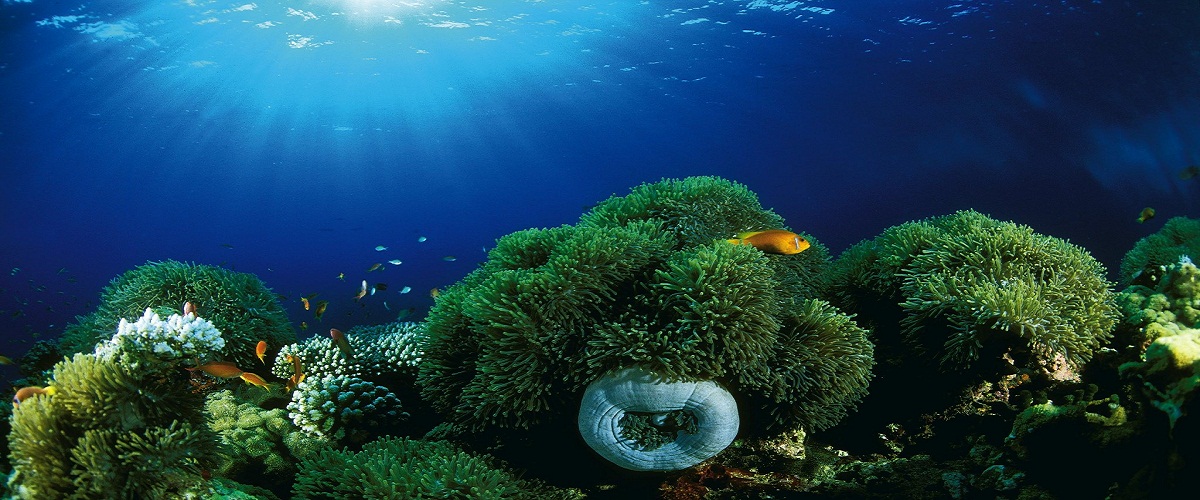
Around the world there are lots of places with stunning coral reefs; however, unfortunately, not all of them are in good condition. For example, like the famed Great Barrier Reef, the Maldives is also home to some of the most diverse and beautiful coral formations in the world. But since 2014 this tropical paradise has been struck by El Niño, resulting in severe coral bleaching which affected between 60 to 90 percent of its coral, depending on the area. The more efforts we all put into coral conservation, the better world we leave for the future generations.